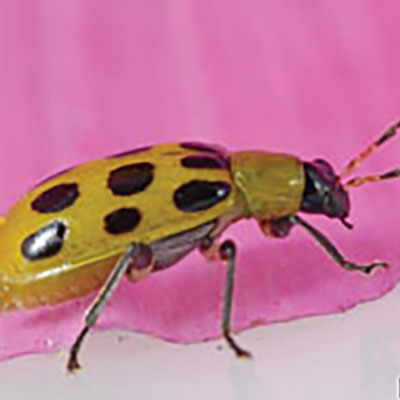Growing for Market in partnership with Johnny's Selected Seeds has created a library of expert information about growing and selling vegetables and flowers. Links in the article will take you to johnnyseeds.com.
Subscribe to Growing for Market for more great ideas about growing and marketing!
For more topics in the series, click on Market Farming Basics in the left column.
Once crops have been harvested, it's time to clean up the remains. Field sanitation consists of plowing down, composting, or otherwise removing plant debris, and mowing adjacent areas. Flowering plants can be left to provide seed for birds, but otherwise plants should be removed from the soil surface to prevent overwintering of pests and diseases. If you had a specific pest problem this season, do some research on the life cycle of the pest to determine where it is overwintering, and take appropriate action to deprive it of those conditions. For example, tarnished plant bugs - a serious pest of strawberries - overwinter as adults in leaf piles and wood piles, so don't leave those near your strawberry field.
Most plant diseases will be killed by hot composting to 160°F/71°C. However, plant pathologists are recommending that plants with late blight be removed from the farm altogether to prevent the inoculum from overwintering.
Weedy areas adjacent to crop fields should be mowed because many kinds of vegetable pests are known to overwinter in them. These include armyworms, cutworms, crickets, earwigs, flea beetles, grasshoppers, lygus bugs, slugs and snails, stink bugs, thrips, and certain viruses vectored by aphids and leafhoppers. (Source: Pests of the Garden and Small Farm by Mary Louise Flint, University of California, available from Growing for Market.)
Reprinted from JSS Advantage October 2009.




 Hands down, my number one enemy over the last two seasons has been early blight on my tomatoes. Two years ago this fungal pathogen destroyed nearly an entire quarter acre of main season tomatoes. Last year on my new farm, it tried to do the same.
Hands down, my number one enemy over the last two seasons has been early blight on my tomatoes. Two years ago this fungal pathogen destroyed nearly an entire quarter acre of main season tomatoes. Last year on my new farm, it tried to do the same. 






